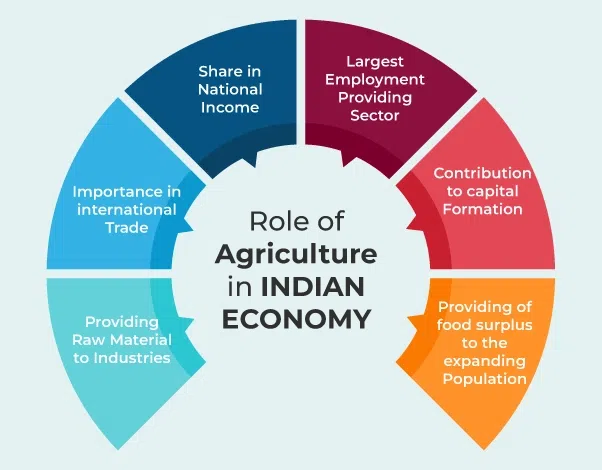India’s economic growth is a compelling narrative that unfolds against the backdrop of a nation with a rich history, diverse culture, and a multitude of challenges. From its agrarian roots to becoming a global hub for information technology and innovation, India’s economic journey is a testament to resilience, adaptability, and the pursuit of progress. In this 4000-word exploration, we will traverse the trajectory of India’s economic growth, examining its historical context, key sectors, challenges, and the path forward.
Introduction
India’s economic story is one of stark contrasts and remarkable transformations. It encompasses the agrarian economy of the past, the industrialization and liberalization of the 20th century, and the burgeoning tech hubs of today. The economic growth in India is driven by a combination of factors, including demographics, entrepreneurship, and globalization.
Historical Roots: The Agrarian Economy
India’s economic history is deeply rooted in agriculture, with a significant portion of its population engaged in farming for centuries. The agrarian economy formed the backbone of India’s pre-independence society and was influenced by various empires and dynasties.
Pre-Independence: Colonial Rule and Agricultural Focus
During British colonial rule, India’s economy was largely centered around agriculture, with the export of cash crops like cotton and indigo to support the British textile industry. The impact of colonial policies and the famines that followed left a profound imprint on India’s economic landscape.
Post-Independence: The Socialist Era
After gaining independence in 1947, India adopted a socialist economic model, with a focus on self-sufficiency and public sector dominance. The industrialization of the country was largely led by the public sector, including the establishment of steel plants, heavy industries, and the Green Revolution to boost agricultural productivity.
Economic Reforms and Liberalization
The early 1990s marked a pivotal moment in India’s economic history with the initiation of economic reforms and liberalization policies. These reforms, often referred to as the “New Economic Policy,” opened up India’s economy to foreign investments, reduced trade barriers, and encouraged private sector participation.
Services-Led Growth: The Rise of Information Technology
One of the most significant drivers of India’s economic growth in recent decades has been the services sector, particularly the information technology (IT) and software services industry. India’s skilled workforce and English proficiency made it a preferred destination for IT outsourcing and software development.
Manufacturing and Industry
India’s manufacturing sector has also grown, albeit with challenges. The “Make in India” initiative, launched in 2014, aimed to boost manufacturing and job creation. This section examines the progress, challenges, and potential for growth in India’s manufacturing sector.
Agriculture: Challenges and Modernization
While India’s economic landscape has diversified, agriculture remains a critical sector, employing a significant portion of the population. This section explores the challenges faced by Indian agriculture, including land fragmentation, low productivity, and the need for modernization and sustainable practices.
The Role of Infrastructure: Roads, Ports, and Connectivity
Infrastructure development plays a crucial role in India’s economic growth. The construction of roads, ports, railways, and airports has improved connectivity and facilitated trade. This section examines the challenges and achievements in infrastructure development.
Challenges on the Road to Economic Growth
India’s economic growth journey has not been without obstacles. Challenges such as income inequality, poverty, bureaucracy, and corruption persist. This section discusses the challenges that need to be addressed for sustainable and inclusive growth.
Income Inequality: The Divide Within
India grapples with income inequality, with a significant wealth gap between the rich and poor. This section explores the reasons behind income inequality and potential strategies to bridge the gap.
Poverty Alleviation: Social Welfare Programs
India has implemented various social welfare programs aimed at poverty alleviation and inclusive growth. This section examines the effectiveness of programs like the Mahatma Gandhi National Rural Employment Guarantee Act (MGNREGA) and the Direct Benefit Transfer (DBT) system.
Bureaucracy and Corruption: Red Tape and Transparency
Bureaucratic red tape and corruption have been persistent challenges in India. This section discusses efforts to streamline bureaucracy and enhance transparency in governance.
Environmental Sustainability: Balancing Growth and Conservation
As India continues to grow, it faces environmental challenges such as air pollution, water scarcity, and deforestation. This section explores the importance of sustainable development and conservation efforts.
The Path Forward: Innovation, Entrepreneurship, and Global Engagement
India’s economic future lies in its ability to innovate, foster entrepreneurship, and engage with the global economy. This section discusses the potential pathways for India’s economic growth in the coming years.
Innovation and Start-ups: The Entrepreneurial Spirit
India has witnessed a surge in start-ups and innovation hubs, particularly in technology, e-commerce, and fintech. This section explores the role of start-ups in driving economic growth and innovation.
Global Trade and Foreign Investments
India’s integration into the global economy is vital for its economic growth. This section discusses trade agreements, foreign direct investment (FDI), and India’s role in international trade organizations.
Digital India: A Technological Revolution
The Digital India initiative aims to transform India into a digitally empowered society and knowledge economy. This section explores the impact of digitalization on economic growth and governance.
Education and Skill Development: The Human Capital Advantage
Investing in education and skill development is crucial for India’s economic growth. This section discusses initiatives and reforms in education and vocational training.
Conclusion
India’s economic growth is a multifaceted journey that encompasses agriculture, manufacturing, services, and technology. It is a story of transition, from an agrarian economy to a global technology hub. While challenges persist, India’s resilience, entrepreneurial spirit, and demographic advantage position it as a formidable player in the global economy.




